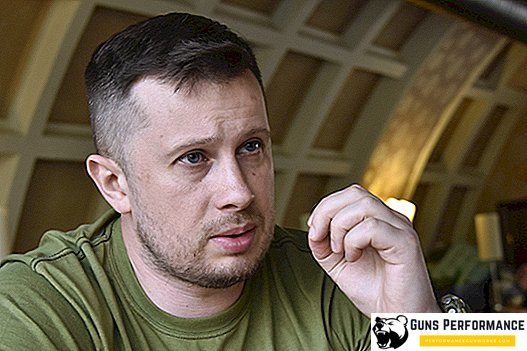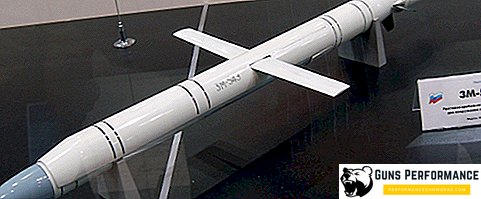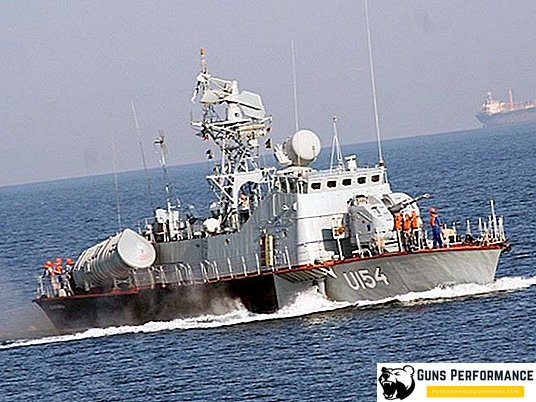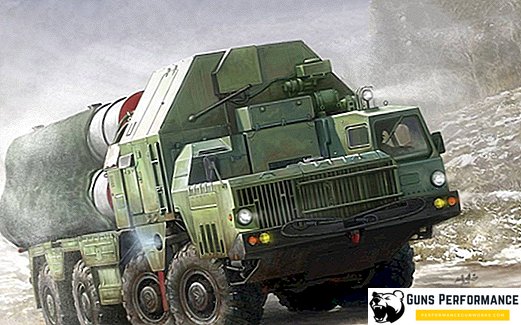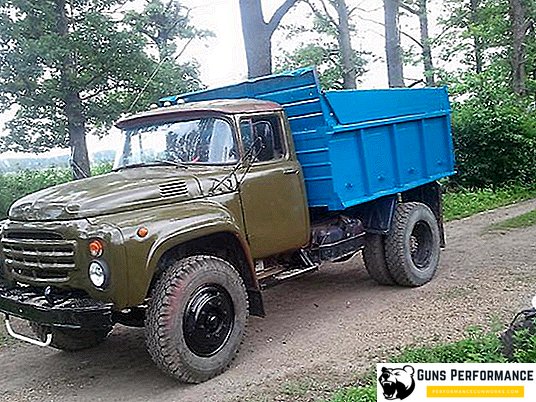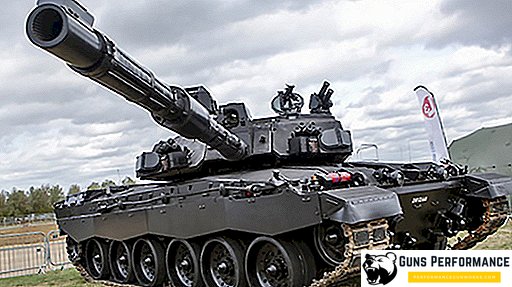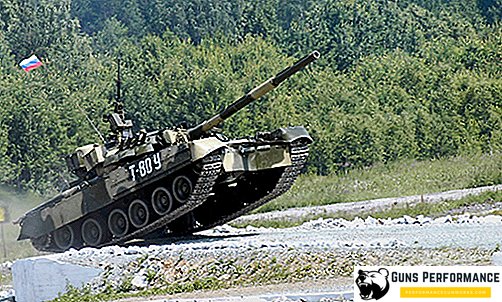The most beautiful sport, along with competitions in athletics, is considered to be a fencing tournament. Fights on rapiers or sabers are the decoration of any Olympiad. The history of this sport dates back to the Middle Ages, when these two types of knives were assigned an almost decisive role on the battlefield. Combat rapier or sword, unlike swords and axes, has not lost its value. Terrible melee weapons, which in the olden days were worn only by officers and noble persons, over time transformed into a sports apparatus.

The rapier came to us from the Middle Ages, when instead of long swords noble and rich warriors began to prefer narrow, long and light. Unlike swords, the weight of which often reached 3 kg, the new weapon was designed for constant wear. It was extremely inconvenient to use a heavy sword as a weapon of self-defense, therefore the European nobility and the nobility of that time preferred to use a light weapon with a long and narrow blade. The first swords and rapiers, which appeared in service, had a weight of not more than 1.5 kg. Along with the advent of a new type of cold arms, new technical methods of warfare also appeared. Fencing with rapiers became a real art, which not everyone could master. Over time, the foil becomes an obligatory attribute of an army and navy officer, an important element in the outfit of a civilian dress and a men's suit.

The rapier became not only a weapon used for military purposes, but also became firmly in civilian use. The appearance of the blades was reflected not only in the perfection of weapons technology, but also in the fashion trends in the development of the men's suit. The blades began to be decorated with various artistic elements of forging, gold and silver script. Garda in the rapier began to acquire the most intricate forms, moving into the category of decorations. By the size and shape of the guard it was possible to recognize the master's hand.
Where did the sports rapier come from?
The weapon appeared in Spain in the middle of the XV century, which by that time was the leading world military power and was considered the trendsetter in the military sphere. The Spanish hidalgo, the officers of the royal army and navy, instead of long heavy swords, began to use a sword - a lightened version of this cold steel. Rapier is a type of sword and is more suitable as a personal weapon. Translated from Spanish, rapier or espada literally translates as "a long sword for clothing." That Spanish version has taken root as a name. In this case, the term clothing is more to the version of the military uniform, since the term civilian dress at that time did not exist.
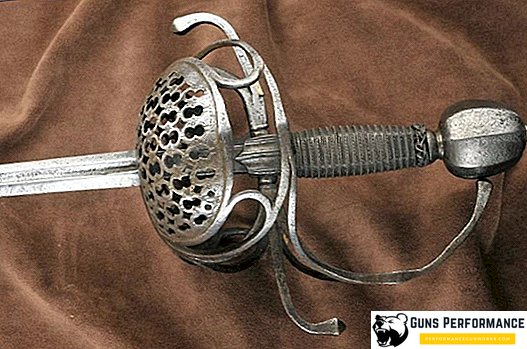
Later, when the rapier became widespread in other countries, confusion arose between swords and rapiers, although in each region the weapon had different names. In Spain, the rapiers were called "espada", and in Italy the long swords were called "spade". Sword or rapier obtained their interpretation in France and in England. In French, the rapier was called "epee", but in England the term "courd sword" meant the court sword. In the German principalities and kingdoms, everything that had to do with this class of weapon was called "degen". Only in Russian it is customary to use both the names of the sword and rapier, which were used depending on the status of the owner.
Without going into subtleties and nuances, rapiers were often called swords and, on the contrary, in a number of countries a real combat sword was called a rapier. The sword is more to the swords, as it could simultaneously be used for chopping and stabbing. What is the difference between a rapier and a sword? The fact that this blade was made in such a way that could inflict only stab wounds on the enemy. The combat technique and fencing techniques with a rapier differed accordingly.
Only in our time for both types of weapons, for swords and for rapiers, the principle of action was fixed, which affected the sports qualifications of the shells.
Rapier and its place in history
The rapier can be safely called the most recent and successful modification of the sword, as a weapon for contact combat. The blade of the rapier was made of the best grades of steel, therefore it was distinguished by a rather high strength and elasticity. With skillful possession of these weapons, one could successfully defend or, conversely, successfully attack the enemy, inflicting injections. The rapier or epee eventually squeezed swords from the battlefield, becoming the main type of personal weapons for officers of infantry, cavalry and navy. The weapon was in service with the European armies until the middle of the XVIII century. In parallel with the development of combat technology, the rapier was divided into combat and civilian modification. There are schools of fencing, divided by nationality. Spanish, English, French and German schools appear. At the forefront is the Italian school of fencing, the main elements of which have survived.
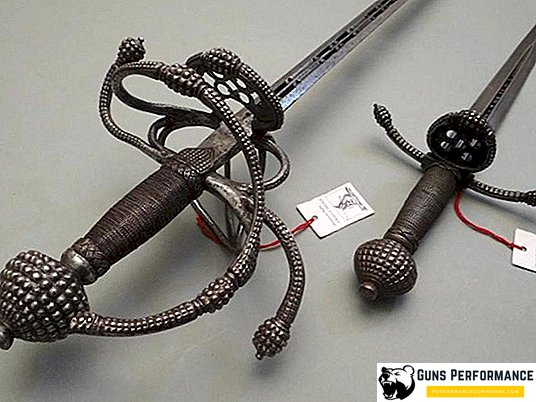
A civilian sword differs from a military weapon in the shape of a blade and the method of sharpening. Unlike the battle rapier, the weapons that spread in civil society were lighter and more elegant. The art of owning weapons and the style of fencing left their mark on the principle of action. In the rapier blade had a narrow sharpened tip, which was the main striking element. Despite the lightness and elegant appearance, the foil continued to remain a weapon, although it was often used as a mandatory attribute of a men's suit. In a society against the background of emerging new patterns of behavior, there is a whole subculture, where the foil is given an important place. Personal weapons are used as a weighty argument in defense of honor and dignity. The loss of the sword was equated with the loss of honor. The favorite method of clarifying the relationship becomes a duel, duel with swords, where the key aspect is the art of owning a sword. Rapier fencing becomes an indispensable element of training for the youth of that time.
Weapons taken to wear not only in wartime. Officers now always remain with the sword. They are echoed by noblemen and officials who are trying to wear a civilian version of the rapier as part of the ceremonial and ceremonial vestments. If in civil society the foil has firmly taken its position, in the military sphere these weapons are gradually replaced by a heavy broadsword and saber — a more practical and effective weapon in battle. As the parade of the military costume, the rapier continued to be used until the First World War. Cuirassiers, guards and naval officers wore swords during ceremonial ceremonies.
Times changed, military art was improved, but the rapier for a long time remained the only type of cold arms, allowed for public wearing. From the middle of the XIX century, the rapier goes into the category of ceremonial, award and sporting weapons. Instead of duels, which were banned everywhere, the first competitions appeared, during which the participants measured the skill of using a sword. The main result of the fight is the exact blow of the enemy foil to the chest area. The loser opponent gave his sword to the winner as a symbol of loss of honor and confession of guilt.
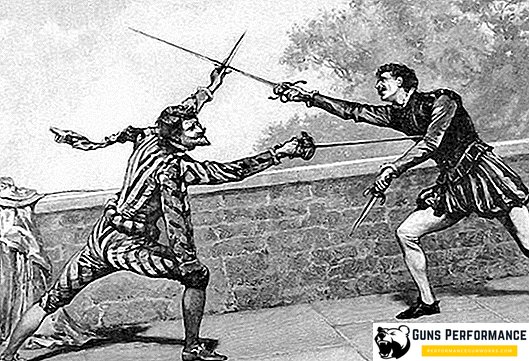
Sports Fencing - The Second Life of the Rapier
The rapier gave impetus to the development of a whole direction in the art of possession of military weapons. Skillfully owning cold bladed weapons ceased to be the prerogative of the military. The design and shape of the blade led to the emergence of its own fencing technique, based on special techniques. The mass distribution of the sword led to the fact that fencing schools appear throughout Europe. It should be noted that each fencing school had its own distinctive features related to the national color and specificity of social and social life. Already in the middle of the seventeenth century, the first textbooks on the art of the possession of a rapier appeared.
Over time, fencing skills are improved and systematized. Certain standards of civilized modification of the sword are being developed, respectively, the most convenient and effective methods of using piercing weapons appear. It is worth noting, for example, in the German and Spanish schools dominate in the technique of fencing chopping techniques, which later formed the basis of the art of fencing with a saber. The prick rapier, i.e. the defeat of the enemy directly by the edge of the blade, was common in the Italian and French fencing schools. The grace with which the opponents converged in the confrontation became the trademark of the Italian style. The result was a widespread fascination with the Italian style of fencing. In the ruling houses and in the prestigious educational institutions fencing is introduced as a compulsory academic discipline. A special position is becoming prestigious - a fencing master, fencing teacher.
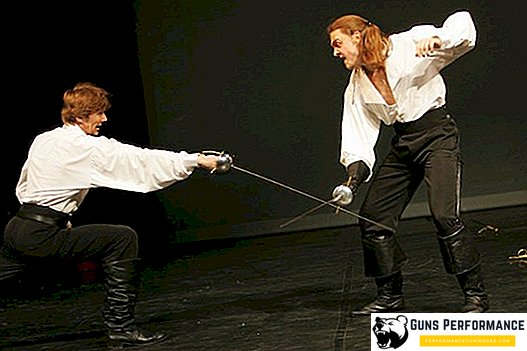
The sports rapier appeared at the end of the 19th century, radically different in form and equipment from a combat and civilian version. The blade of the weapon received a rectangular cross section and became more elastic. The thrusting rapier became the main technique, around which a host of other elements of defense and attack have already appeared. The flexibility of the blade allowed the weapon to maintain integrity with large bends during the thrust. Has undergone changes and the very equipment of weapons. Garda, instead of its frilly form, becomes a bulging sports ration. What is important now is not the beauty of the product, but its protective function. The weapon itself becomes light, weighing no more than 500 g.
The ease and comfortable form of the rapier allowed even women to take part in fencing sports competitions, which at the present stage is becoming a purely applied sport. The traditions of military and civilian use of the sword, the technique of fighting and the art of owning bladed cold weapons imperceptibly passed into the rules of sports tournaments. First, private ceremonial tournaments began to be held, and a little later the competitions become international. The national fencing championships were the first signs of a rapier in the world of big sport. Already at the first Athens Olympics in 1896, the games program included a fencing tournament. Originally, the fencers' tournament was general and was held in one discipline. Four years later, in 1900, at the Olympic Games in Paris, athletes competed in three disciplines. Separately were held tournaments on fencing on sabers, on swords and rapiers.
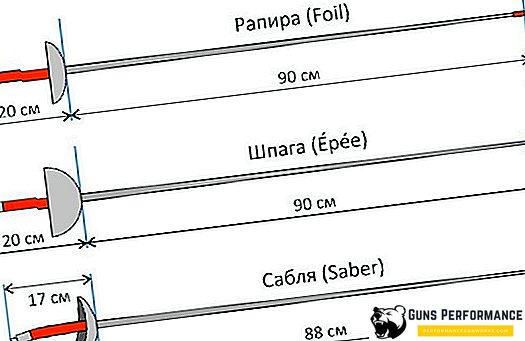
Finally
At first glance, it seems to an inexperienced observer that the art of fencing with sabers, swords and rapiers is almost the same. This error is easily debunked when you observe the course of a duel. In contrast to the sword and saber, where strikes can be inflicted, both chopping and stabbing, rapier fencers act in a completely different way. A strike is considered correct if it is caused by the edge of the blade and a strictly defined zone. It is easy to find differences in the appearance of the weapon. The rapier is characterized by a convex, spherical shape of the guard, while the saber has an oval shaped guard with an additional brace protecting the swordsman's fingers from sliding and slashing blows. In the fights of the rapierists there is a desire for classic combat. The saber competition is more dynamic and therefore more spectacular.

It is not difficult to notice the place where the opponents mark. The affected area of each weapon is strictly defined depending on the principle of operation and scope of application. For the rapier, a follower of combat and personal contact weapons, the main zone of destruction of the enemy’s body. Injections to the head and hands are not counted. This restriction accordingly imposes an imprint on the style of fencing. The techniques of the rapierists are more refined and verified. One well-done injection can bring victory to the athlete. Thanks to modern electronics, the fencing technique has now reached the peak of its perfection. It became possible to record almost simultaneous strikes, between which the difference in time is hundredths of a second. Significantly improved combat technique, where each athlete has the right to attack.


